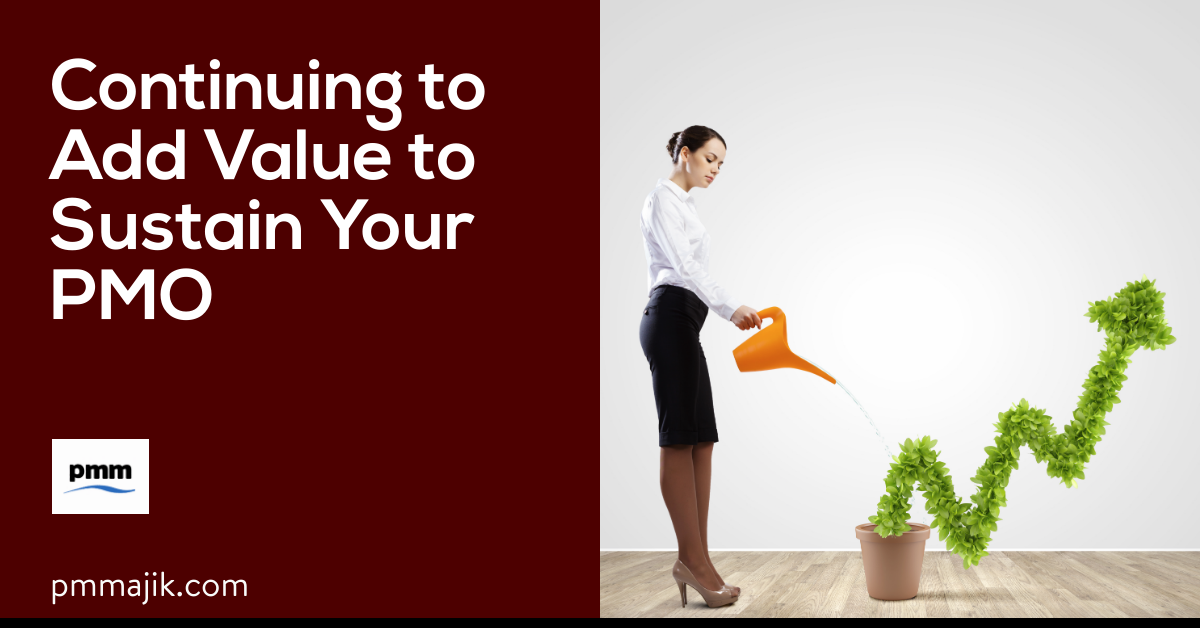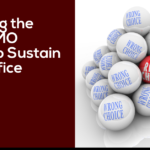Once your project management office (PMO) has reached maturity, you to safeguard its position within the business. By continuing to add value to sustain your PMO, your office should be around for years to come.
Of course, you need to keep an eye on potential failure points so that your PMO doesn’t get closed down, but it’s not all about being defensive. It’s easier to justify the role of your office when you can present positive outcomes instead of demonstrating how you’ve not got any worse.
To help you make a plan to keep adding value through your PMO, we’re going to look at:
- Why a PMO needs to add value
- Communicating the value your office adds
- Helping the business become more efficient
- Becoming a management resource
So you can see your PMO be successful long into the future.
Why does my PMO need to add value?
A PMO needs to continue to add value to the business to protect it from closure. Among many in senior management positions, a PMO can be seen as a waste of money; another layer of bureaucracy.
In the face of negative perceptions, your office needs to be more than a monthly report. Although monitoring and reporting on projects is your bread-and-butter, your office has skills and knowledge that the wider business can benefit from.
If you can demonstrate that your PMO can add to the bottom line – rather than be a cost centre – you’re much more likely to be protected when the business reorganises.
How can I communicate the value my PMO offers already?
Your PMO will already be adding value to the business once it’s mature enough to consider changing to a sustainable rather than start-up PMO. The aim of a PMO is to ensure projects are delivered on time and on budget, after all.
To make sure the right people in the business know about the success of your PMO, you need to work on raising awareness.
We’ve looked at the why and how of raising awareness of your PMO before. In short, you need to shout about your wins and make sure the right people hear you.
It’s important to target your messaging. The way you tell the C-suite about your success will be in terms of financial and strategic benefit to the business. However, if you want your HR or accounts team to know you’re working hard, you need to tell them about elements of your office that make their lives easier.
How can my PMO improve business efficiency?
Now your office is mature, you have your processes down to a T and know how to support projects to optimally deliver. How can that translate to other areas of the business?
Your PMO has a range of tools to help deliver projects, such as:
- Frameworks
- Process maps
- Reports
You can use this and your delivery expertise to educate the wider business.
There are lots of ways you can achieve this, and we’ve discussed different ways to educate a business about your PMO recently. What’s important is that you can transfer knowledge to other business areas and track the progress.
You can offer training, job shadowing, or reading material – but tracking how many people are accessing your materials and how management and delivery in the business changes will demonstrate its success.
How can I become a management resource?
After you move from being a start-up PMO, you’ll likely shift where your PMO attention’s focusses on. This will see you move from an administrative PMO to a business-focussed or enterprise PMO.
You’re confident in the abilities of your office and your team and are ready to make an impact on the business. This position means you can offer your office skills and resources across the piece.
This is different from actively offering education in that you will open up your tools for anyone to adapt as they see fit. Again, tracking who is using your resources and how their management improves will demonstrate the value you add to the business.
Sustaining your PMO by adding value
To sustain your office after maturity, you need to show you can add value. You can do this by improving efficiencies across the business by sharing your knowledge and making sure that your colleagues and management know about your activities.


